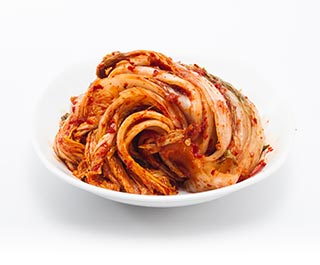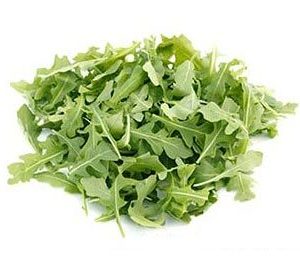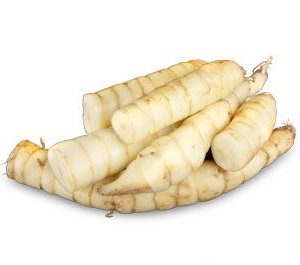Kimchi is a spicy side dish made from fermented vegetables and Korean red pepper. It is consumed daily by 95 percent of South Koreans and is deeply ingrained in their culture.
Koreans have enjoyed kimchi for thousands of years, but it first began to gain international recognition during the 1988 Summer Olympics in Seoul, South Korea.
The timeless staple of Korean dining was viewed as both a potential source of pride and embarrassment. Officials worried that the strong odor of kimchi would repulse the throngs of visiting athletes, tourists and journalists.
Despite these concerns, kimchi was made one of the official foods of the Olympic village. This was only natural considering its importance in Korean culture, but they also made an effort to make it more acceptable to those not accustomed to its odor.
It was reported that event staff were instructed to brush their teeth after they ate kimchi.
Contrary to predictions, the spicy and pungent flavors of kimchi received favorable reception from the Olympic athletes and the visiting audience at large. The international exposure served as a catalyst for kimchi’s popularity, and it has continued to gain recognition in the ensuing decades.
There is a lot more to kimchi than its bold, savory flavors. Science has provided us with greater appreciation of the microbial benefits of fermented foods and their influence on gut health.
What Is Kimchi?
Kimchi is a quintessential Korean dish. It is made from vegetables, most often cabbage, which are fermented with lactic acid bacteria and flavored with Korean red pepper. Usually served as a side dish, kimchi has a spicy, savory flavor that has been embraced by home chefs, foodies and casual diners across the world. Interestingly, kimchi has fallen out of favor with younger generations in Korea, but at the same time, sales of heavily processed American cheese have soared.
Kimchi dates back at least two millennia and was probably developed to preserve cabbage and prevent starvation during the severe Korean winters. There are over 200 varieties of kimchi, but the most common variant is made with Napa cabbage, Korean red pepper and a mix of aromatic ingredients such as garlic.
Korean red pepper, called gochugaru, is what distinguishes kimchi from other fermented vegetables. The pepper is crushed into a powder and gives kimchi both its distinctive appearance and fiery flavor. Gochugaru is also the primary catalyst of the fermentation process. Studies have shown that it influences the composition of the microbial communities and metabolites formed during fermentation.
The other core component of classic kimchi is Napa cabbage. Originating in China, the dense and cylindrical cabbage has milder flavor than traditional cabbage. Even before fermentation, it packs an impressive nutritional punch and is loaded with vitamins and minerals.
Health Benefits of Kimchi
Kimchi owes its recent spike in worldwide popularity to the growing backlash against ultra-processed food. Consumers are now looking for natural foods that provide additional health benefits. As a fermented food loaded with nutrients and healthy microbes, kimchi certainly fits the bill.
Napa cabbage kimchi, the most common variety, has only 15 calories per half-cup serving and contains vitamins A, B, C and K. It is also loaded with vital minerals like potassium, calcium and magnesium.
Flavorful Korean red pepper gives kimchi its trademark appearance and is rich in capsaicin, a spice that provides unique health benefits including pain relief, cancer prevention, weight loss, gastrointestinal health and cardio-protective influence. Many kimchi recipes include additional beneficial ingredients such as garlic, radish, ginger, scallions and shallots. Garlic may effectively combat Helicobacter pylori, which is a serious risk factor for stomach cancer.
Kimchi is loaded with healthy lactic acid bacteria. A 2014 study in the Journal of Medicinal Food states that the health functionality of kimchi includes, “Anticancer, antiobesity, anticonstipation, colorectal health promotion, probiotic properties, cholesterol reduction, fibrolytic effect, antioxidative and antiaging properties, brain health promotion, immune promotion, and skin health promotion.”
Uses for Kimchi
Kimchi is traditionally served as a side dish, but its uses have expanded with its popularity. There are several varieties of kimchi, many of which rely on a completely different set of vegetables than the classic Napa cabbage. The fermented flavor is versatile enough to be paired with cuisines that are not Korean. Kimchi can be easily adapted to any taste, and a hearty serving can easily serve as a meal rather than just a side dish.
Kimchi has experienced a bit of a renaissance as an ingredient. It is often added to soups, noodle dishes and rice dishes because of its bold taste. It is often mixed with fried rice, paired with eggs in breakfast dishes, used as a pizza topping and even works well as a burger garnish. Healthier options include mixing kimchi with other vegetables, and using it as a condiment.
Kimchi Season: Gimjang
The late autumn tradition of preparing, processing and fermenting kimchi is known as gimjang. Gimjang is a collective process where extended families and even entire villages gather to prepare large quantities of kimchi to last through the winter. Included by the UNESCO on the Representative List of Cultural Heritage of Humanity, gimjang is much more than just the gathering and processing of kimchi ingredients.
Although fresh produce is now available throughout the year, gimjang remains an integral part of the Korean culture. In November 2017, 4,700 participants gathered at the Seoul Kimchi Festival. On the first day alone, participants made over 60 tons of kimchi and by the end of the three-day festival, over 120 tons had been produced. The kimchi was then donated to low-income households throughout Korea.
Gimjang serves the practical purpose of preparing food but it also strengthens cooperation. The communal approach to kimchi productions serves as a reminder that individuals and communities are interdependent.
How to Eat Kimchi
You will often encounter kimchi in several varieties that may range greatly in spiciness and fermented flavor, and as a side dish almost any time you eat Korean cuisine. The large, flavorful punch of kimchi also makes it extremely versatile. Kimchi stew, soup, pancakes and fried rice are venerable Korean classics that have found widespread popular appeal.
Kimchi has also found a number of applications outside of the culinary traditions of the Korean peninsula. Kimchi’s potential uses are limited only by your imagination.
Keep in mind that many kimchi recipes will include fish or anchovy sauce. If you are a vegan, consider substituting miso paste for the fish sauce. Researchers have found that vegan kimchi has the same microbes as traditional kimchi made with seafood products.
Kimchi Nutrition Facts
Recipes for kimchi vary greatly by region, season and personal preference. A classic Napa cabbage kimchi has only about 34 calories per 100-gram serving. Kimchi also provides potassium, vitamin A, vitamin C and manganese in useful quantities. The nutritional profile of kimchi is entirely dependent on the ingredients you choose to include but here is a basic breakdown from the USDA nutrient database.
| Cabbage, Kimchi
Serving Size: 1 cup (150 grams) |
||
| Amt. Per Serving |
% Daily Value* |
|
| Calories | 22 kcal | |
| Calories from Fat | ||
| Total Fat | 0.75 g | |
| Saturated Fat | 0.10 mg | |
| Trans Fat | 0.0 g | |
| Cholesterol | 0 mg | |
| Sodium | 747 mg | |
| Total Carohydrabtes | 3.60 g | 2% |
| Dietary Fiber | 2.4 g | 2% |
| Sugar | 1.59 g | |
| Protein | 1.65 g | |
| Vitamin A140 IU | Vitamin C | 0 mg |
| Calcium50 mg | Iron | 3.75 mg |
*Percent Daily Values are based on a 2,000 calorie diet. Your daily values may be higher or lower depending on your calorie needs.
Kimchi Is a Probiotic Superfood
The greatest benefits of kimchi come from the fact it is a fermented dish. When properly made, kimchi is full of healthy bacteria, and beneficial lactic acid. Other healthy ingredients such as garlic, red pepper and cruciferous vegetables add to the potency of kimchi. You can try following the recipe above, or tweak it to make your own version — the choice of vegetables and the spiciness levels can be up to you. Just remember to taste your homemade kimchi to ensure you’re getting the flavor you want.
Frequently Asked Questions (FAQs) About Kimchi
Q: Where can I buy kimchi?
A: If you would like to sample kimchi, it is available at almost every Korean restaurant. It is also sold at grocery stores and through online retailers.
Some brands of kimchi are not pasteurized, and these are your best bet, as the pasteurization process will destroy the healthy bacteria population. The growing popularity of fermented foods is likely to lead to innovative packaging in the future that will protect the live probiotic culture in products such as kimchi.29 Better yet, try making your own kimchi at home, using the recipe above.
Q: Is kimchi healthy?
A: Kimchi is rich in vitamins A and C, and due to its fermentation process is also rich in beneficial gut-boosting Lactobacilli bacteria. Kimchi has potent antioxidative and immune-stimulating activities along with anti-obesity effects and more.
Q: What does kimchi taste like?
A: There are hundreds of versions of kimchi using different vegetables and seasonings. It provides a wide range of sour, umami and spicy flavors. The flavor of kimchi can vary greatly by region and is influenced by the vegetable ingredients, length of time fermented and seasonings used. Most kimchi has a salty and savory flavor. Fermented fish paste, fish sauce and anchovies are frequently added, although these are not strictly necessary.
The fermentation process imparts a sour flavor and pungent odor. This is due to the Lactobacillus content. A common thread in most traditional versions of kimchi is the use of Korean red pepper. The amount used can vary greatly, so the spiciness of kimchi can range from mild to extremely spicy.
Q: What is the shelf life of kimchi?
A: Even fermented foods can go bad and the temperature kimchi is stored at has a huge impact on the rate of fermentation, flavor and shelf life. Fermentation occurs on a linear scale, it is slowed by refrigerating and increases with the ambient temperature. Kimchi can be stored for several months in a refrigerator, but is best if consumed within a week of being opened.
If gas is not allowed to escape, the fermentation process creates fizz and bubbles in kimchi. Whether you like your kimchi fizzy or not is a matter of personal preference. This can be easily dealt with by loosening the lid.







Reviews
There are no reviews yet.